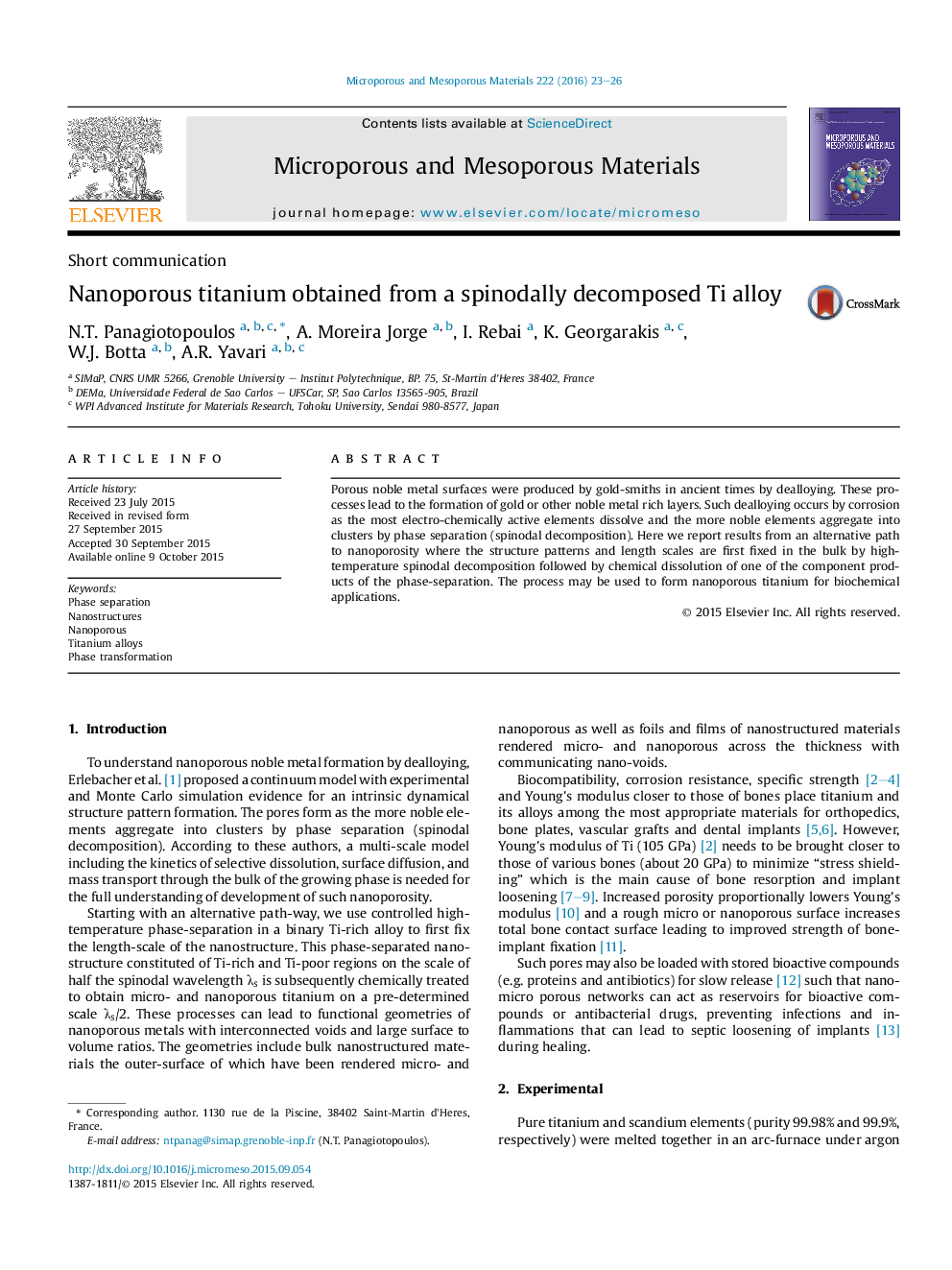| Article ID | Journal | Published Year | Pages | File Type |
|---|---|---|---|---|
| 72027 | Microporous and Mesoporous Materials | 2016 | 4 Pages |
•An alternative path of nanoporosity formation.•Spinodally decomposed Ti alloy.•Structure patterns and length scales are determined by spinodal decomposition.•Selective dissolution of one of the component products of the phase-separation.•Nanoporous titanium for potential biochemical applications.
Porous noble metal surfaces were produced by gold-smiths in ancient times by dealloying. These processes lead to the formation of gold or other noble metal rich layers. Such dealloying occurs by corrosion as the most electro-chemically active elements dissolve and the more noble elements aggregate into clusters by phase separation (spinodal decomposition). Here we report results from an alternative path to nanoporosity where the structure patterns and length scales are first fixed in the bulk by high-temperature spinodal decomposition followed by chemical dissolution of one of the component products of the phase-separation. The process may be used to form nanoporous titanium for biochemical applications.
Graphical abstractFigure optionsDownload full-size imageDownload as PowerPoint slide
